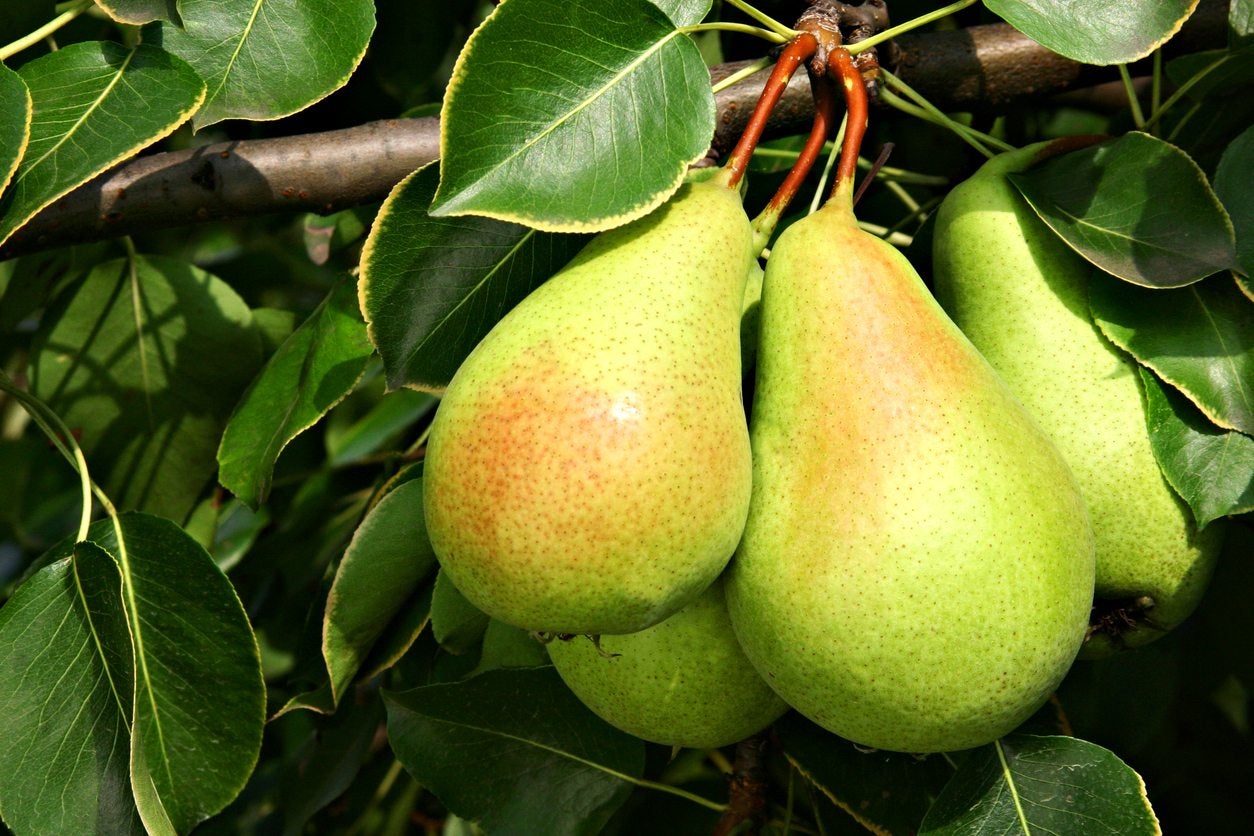
While you may not be able to grow citrus trees in the cooler regions of the United States, there are a number of cold hardy fruit trees suited to USDA zone 4 and even zone 3. Pears are ideal fruit trees to grow in these zones and there are quite a few cold hardy pear tree varieties. Read on to find out about growing zone 4 pears.
About Pear Trees for Zone 4
Pear trees suited for zone 4 are those that can withstand winter temperatures between -20 and -30 degrees F. (-28 and -34 C.). Some pear trees are self-fertile, but the majority of them need a pollinating buddy nearby. Some are more compatible than others too, so it’s important to do some research regarding which to plant together if you want a good fruit set. Pear trees can also get quite large, up to 40 feet (12 m.) in height when mature. That combined with the need for two trees equals the need for some significant yard space. Until recently, cold hardy pear tree varieties tended to be more for canning and less for eating out of hand. Hardy pears are often small, tasteless, and rather mealy. One of the hardiest, John pear, is a good example. Although extremely hardy and the fruit is big and beautiful, they are unpalatable. Pears are fairly disease and insect free and are more easily grown organically for just this reason. A little patience may be in order, however, as pears can take up to 10 years before producing fruit.
Zone 4 Pear Tree Varieties
Early Gold is a cultivar of pear that is hardy to zone 3. This early maturing tree produces glossy green/gold pears a little larger than Bartlett pears. The tree grows to around 20 feet (6 m.) in height with a spread of about 16 feet (5 m.) across. Early Gold is perfect for canning, preserving, and eating fresh. Early Gold does need another pear for pollination. Golden Spice is an example of a pear tree that grows in zone 4. The fruit is small, 1 ¾ inch (4.5 cm.) and is more suited to canning than eating out of hand. This cultivar grows to around 20 feet (6 m.) in height and is a good pollen source for Ure pears. Harvest takes place in late August. Gourmet is another pear tree that grows well in zone 4. This cultivar has medium sized fruit that is juicy, sweet, and crisp-- ideal for eating fresh. Gourmet pears are ready to harvest from mid to late September. Gourmet is not a suitable pollinator for other pear trees. Luscious is suited to zone 4 and has a flavor reminiscent of Bartlett pears. Luscious pears are also ready for harvest from mid to late September and, like Gourmet, Luscious is not a good pollen source for another pear. Parker pears are also similar in size and flavor to Bartlett pears. Parker may set fruit without a second cultivar, although the crop size will be somewhat diminished. A better bet for a good fruit set is to plant another suitable pear nearby. Patten is also suited to zone 4 with large fruit, delicious eaten fresh. It is slightly hardier than Parker pear and may also produce some fruit without a second cultivar. Summercrisp is a medium sized pear with a red blush to the skin. The fruit is crisp with a mild flavor very much like an Asian pear. Harvest Summercrisp in mid-August. Ure is a smaller cultivar that produces small fruit reminiscent of Bartlett pears. Ure partners nicely with Golden Spice for pollination and is ready for harvest in mid-August.
Sign up for the Gardening Know How newsletter today and receive a free copy of our e-book "How to Grow Delicious Tomatoes".

Amy Grant has been gardening for 30 years and writing for 15. A professional chef and caterer, Amy's area of expertise is culinary gardening.
